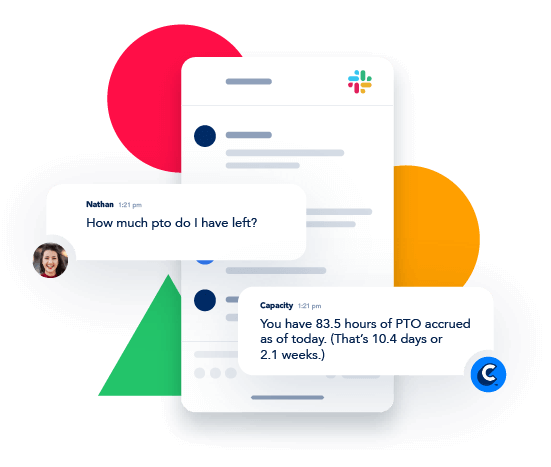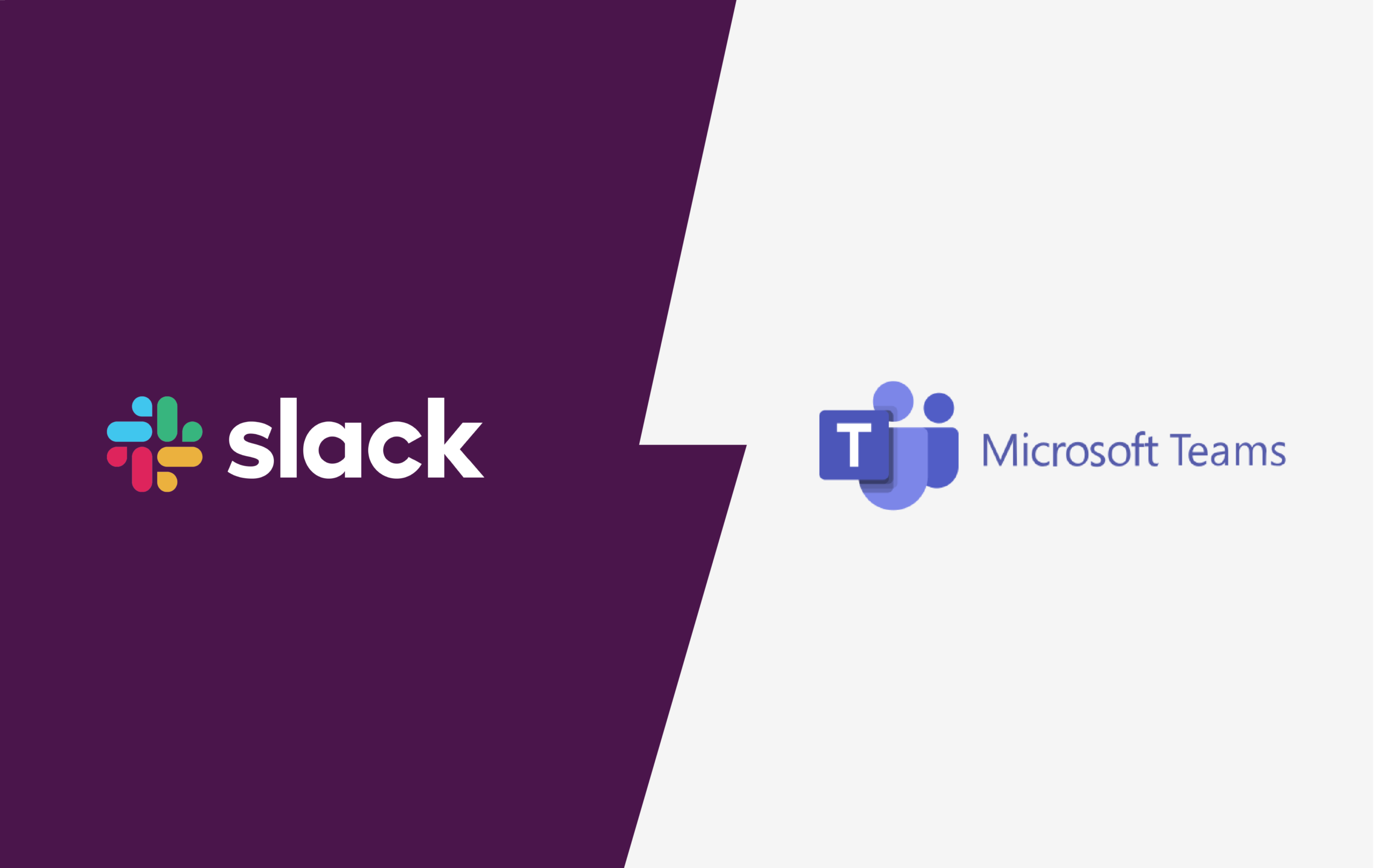Slack and Microsoft teams have been going back and forth in an attempt to best one another for a while. The most recent retort comes from Slack as it partnered with Amazon Chime for voice and video conferencing. However, regardless of the rivalry, both companies are committed to helping organizations and teams collaborate with unique agendas.
Microsoft Teams focuses on offering a safe and secure way to communicate as it connects to Microsoft 365 tools. Slack promotes an easier, more organized way to work which eliminates the need for email in the workplace.
Every organization has different needs, so choosing one platform over the other comes down to choosing the right fit. While Microsoft Teams might be the better option for a company that already relies heavily on Microsoft 365, Slack might be better for an organization that is trying to get away from the communication styles that come with traditional office culture. In this article, we’ll compare the features of each tool, so our readers can make an informed decision on what is best for them.
Pricing and implementation:
Companies of all shapes and sizes can benefit from a collaboration tool. However, some organizations don’t want many features or have many users and prefer a straight-forward implementation, where others require extensive features, have thousands of employees, and prefer to wait (or pay) if it means perfection. Bottom line, every organization places different values on implementation time and product cost. Here’s where you can decide what tool would work best for your organization.
Slack.
Slack charges per user per month and has four pricing tiers including freemium, standard at $6.67, plus at $12.50, and enterprise which is unlisted. It also only takes about 7 minutes to get Slack up and running for an org.
Teams.
Teams also charges per user per month with four pricing tiers including freemium, basic at $5.00, standard at $12.50, and E3 at $20.00. An added perk of Teams includes access to Microsoft 365 packages. However, Teams has a more tedious implementation process, which could take hours or days.
Channels:
Space for multiple teammates to collaborate or a conversation between two individuals. In both tools, users can share links and files, have team meetings, and huddle on specific projects regardless if everyone is on the same team or even in the same organization.
Slack.
Slack enables users to create private, public, or shared channels. A private channel could be used for a specific department that is interested in keeping internal discussions confidential. A public channel could be used for employee resource groups or general conversations that the entire organization can find or join in on. A shared channel is for connections outside of the organization, whether it be a client, vendor, agency, etc.
Regardless of the channel, users can share files for the team to access, refer back to, and/or download. Users can add reactions, call each other or the entire team, start a thread under a specific message, pin files or statements for the group to easily reference, set reminders, or create tasks via integrations. In public channels, users can also share messages across other public channels.
Teams.
Teams enables a similar setup where users can create private, public, and org-wide channels, which are called “teams.” A private and public team is similar to Slack’s private and public channel, but an org-wide team is one that every user is automatically included in. Teams also allows users to communicate with other Teams users outside of the organization, but you have two ways to grant access. The first being external access, which allows users to find, call, and chat users with different domains. The second is guest access, which allows users to add individuals to their teams, as guests, using their email address. For a quick run-down of the differences, you can view this chart.
Teams allows users to add reactions to files or messages, create a private message within a public channel, pin files for the group to easily reference, set reminders with third-party apps, or create tasks via Microsoft 365 integrations.
Integrations:
On average, employees are forced to switch between 35 mission-critical applications 1,100 times every day. And after switching to a new program or app, it takes 23 minutes to regain focus! Both products offer integrations to avoid the pitfalls of wasted time, but they come in different capacities. Depending on the tools that your organization currently uses, you may favor one tool over the next.
Slack.
Slack seamlessly connects with more than 2,000 apps, and that number continues to grow. This means that there’s already a pretty good chance that Slack has you covered to connect with your current tools. For your company’s proprietary apps, Slack enables users with its APIs to build internal integrations.
Teams.
Teams seamlessly integrates with the Microsoft 365 platform and almost 500 third-party apps. While it’s not as likely that Teams already connects to all of a user’s mission-critical tools, users can integrate apps of their choosing with Microsoft’s developer platform.
Capacity interfaces with both tools.
While both platforms have built-in bots—Slackbot for Slack and Who for Teams—that can help answer users’ questions, Capacity interfaces with both tools to provide an additional layer of AI-powered support to help teams do their best work.

What can users do with Capacity via Slack or Teams?
- Access all their company’s knowledge with simple questions.
- Use natural language to interact with the 50+ apps Capacity integrates with.
- Pull up any type of file from a cloud drive.
- Tailor notifications from their organization and go-to apps.
- Receive follow-up answers from the Capacity bot for any recently added knowledge.
- Have intuitive conversations with the Capacity bot to complete complex tasks.
- Quickly search coworkers’ availability and schedule meetings.
- Provide feedback in real-time to continuously improve Capacity’s machine learning.

Video or voice calling:
Discussing a certain topic in a public channel can sometimes get overwhelming and hard to follow. So it’s no wonder that both platforms offer the ability to have one-on-one calls, host meetings with a team, and share screens to keep everyone on the same page via video or voice call.
Slack.
Slack’s video calling is now powered by Amazon Chime. It currently limits the number of people who can join a team call to 15 but easily integrates with other video conferencing apps if users need more people on a call. Users can start meetings or join calls without leaving a Slack conversation by connecting the video conferencing service of choice, including Teams.
Teams.
Teams video calling is powered by Skype for Business, which means it’s capabilities expand past a team meeting. It enables users to start or join company-wide meetings, webinars, and events with up to 10,000 attendees inside or outside of their organization. Users can also record meetings within Teams and share them or reference them later.
When choosing a collaboration platform, make sure to keep your team in mind. By carefully thinking through the product offerings, you can help your team do its best work.











































